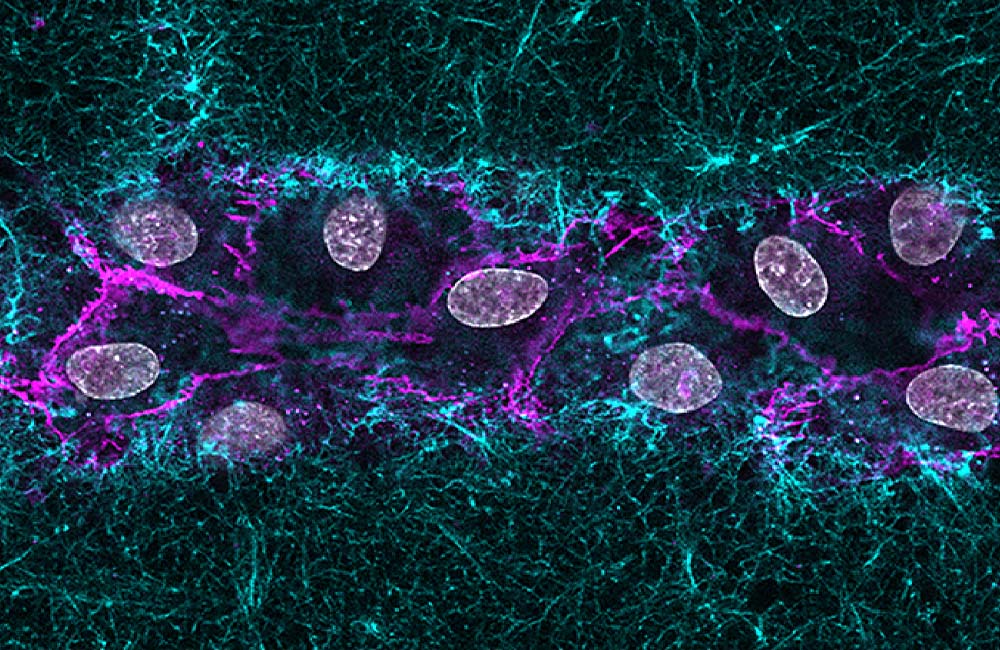Researching rare diseases
Rare diseases are by definition rare, yet put together they affect around 300 million people worldwide. The effects can be devastating for individuals and their loved ones and can include a decreased lifespan or quality of life. Researchers at IMB are investigating the rare diseases cerebral cavernous malformations (CCM) and birth defects to learn more about how they form and what can be done to prevent them. Here are some of the more recent breakthroughs.
Is hyluronic acid the answer to repairing the blood brain barrier?
Cerebral cavernous malformations (CCM) are found in up to 0.5% of people. They are raspberry-shaped clusters of enlarged blood vessels and are mainly found in the white matter of the brain. Severe cases can lead to brain haemorrhage. New research by IMB's Mikaela Keyser, Dr Anne Lagendijk and collaborators found that hyaluronic acid in the brain can modify disease outcome.

Using a 3D bio-engineered vessel model, they found that supplementing the environment surrounding CCM blood vessels with specific hyaluronic acid molecules slowed disease progression.
CCM severity could be related to the activity of genes associated with hyaluronic acid, so restoring the regulation of hyaluronic acid might improve outcomes for CCMs.
Thank you to Pauline and William North and the Be Brave for Life Foundation whose generous support helped make this research possible. For more, read the full study published in APL Bioengineering.
The unusual way researchers study birth defects
What you see here is one of the most important steps in a baby's development - the formation of the neural tube which gives rise to the brain and spinal cord. This one shows that process in a baby quail.
Credit: Dr Melanie White
Since it's difficult to examine human babies already implanted in their mother's womb, IMB researchers at the White Lab use an unusual but innovative quail model to study development and rare birth defects. Quails develop in a very similar way to humans and because they grow inside an egg, we can use live imaging to analyse them.
Dr Melanie White and colleagues look at quails with rare heart and neural tube defects to better understand what leads to birth defects and what we can do to prevent them.
Birth defects happen when something goes wrong in a baby's development in the womb and could be due to genes, exposure to a harmful substance or even certain health conditions of the mother. They can have a profound impact on the individual leading to lifelong disabilities and increased mortality. By understanding more about development and how birth defects form, we can find ways to prevent them.
Support our research
Our research is possible, in part, because of supporters and generous donors. Please consider making a donation via the link below or subscribing to our monthly newsletter to stay up to date with our research.
